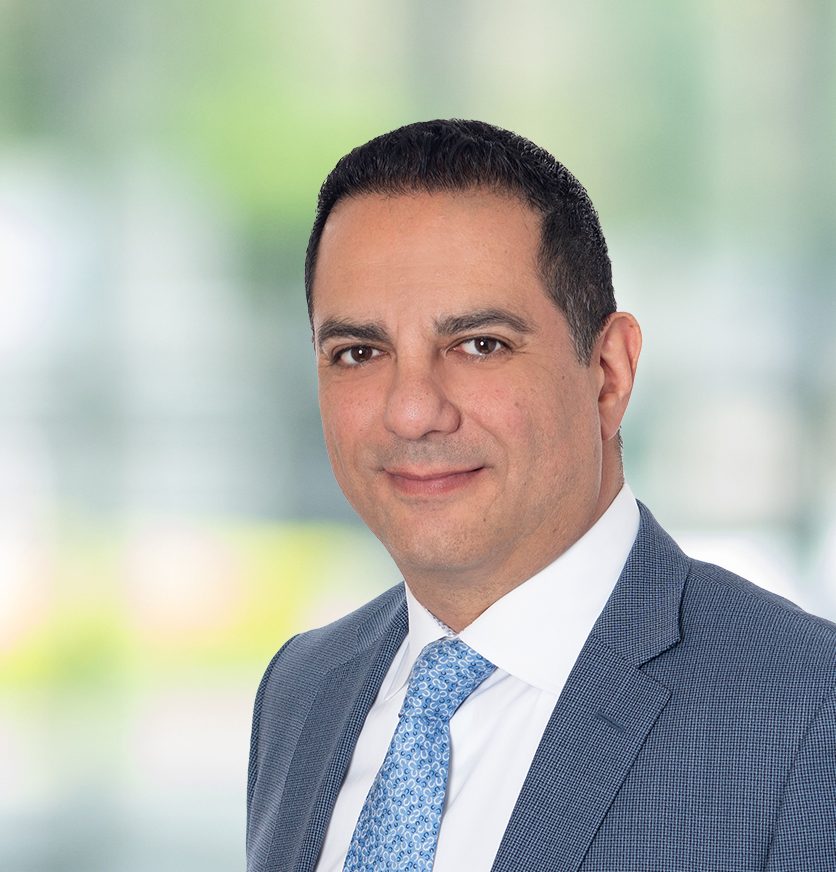 For our latest interview in the Expert Insights series, we had the pleasure of speaking with David Lari, a partner at Cox, Castle & Nicholson LLP, one of the largest full-service law firms specializing in real estate in the United States.
For our latest interview in the Expert Insights series, we had the pleasure of speaking with David Lari, a partner at Cox, Castle & Nicholson LLP, one of the largest full-service law firms specializing in real estate in the United States.
One of California’s leading transactional attorneys specializing in complex commercial real estate matters, Lari is head of Cox Castle’s Los Angeles Real Estate and Development Team, a member of Cox Castle’s Management Committee, and co-chair of Cox Castle’s Marketing Committee.
With more than 25 years of experience, Lari represents several of the nation’s largest real estate investment trusts (REITs), private equity groups, funds, developers, and investors within the health care, life sciences, industrial, office, and other commercial real estate sectors, handling a broad range of sophisticated, high-profile real estate matters.
Notably, Lari has received several accolades and was recognized as a “2023 Top 100 Lawyer” by The Los Angeles Business Journal, a “2021 Healthcare and Life Sciences Trailblazer” by The National Law Journal, and a “2020 Influencer in Healthcare Real Estate” by GlobeSt.com.
Lari also endeavors to give back to the broader community and to advance positive, constructive social goals. As such, he has served as a multi-year board member for the City of Hope, Los Angeles Real Estate (LARE), and currently serves as a member of Cox Castle’s Homelessness Initiative Committee.
Q: Tell us a little bit about your background and your career as a real estate attorney.
I started my career at a large, international law firm where I practiced real estate, as well as corporate and other types of law. I was drawn to commercial real estate primarily because of the relationship-based nature of the industry. Real estate intrigued me because I found the clients and industry players to be interesting, and it was a relationship-driven business.
Since then, I’ve spent the last 20+ years as a transactional attorney specializing in complex commercial real estate matters. I represent institutional and entrepreneurial real estate players and help navigate their legal needs, including acquisitions and dispositions, mergers, joint ventures, management agreements, ground leases, and development agreements throughout the United States. My practice is exceedingly client-centric. I find it stimulating to understand my clients’ goals and needs, and it compels me to work hard to achieve those goals, while at the same time alerting them to any potential risks.
Q: How have you seen the industry evolve in the past few years?
I’ve seen the real estate industry dramatically change toward a more institutional-focused endeavor. Historically, real estate tended to be a smaller, regional sector of the economy. Today, it’s shifted as larger investors — such as REITs, private equity, pension funds, foreign funds and other institutional investors — have expanded, and access to information has also become more national. We’ve seen considerably more clients executing real estate transactions throughout the country versus just having a regional focus. While there are still some clients that focus within a particular region, the size and scope of the projects and the geographic nature of those projects have broadened.
We also see significantly more joint ventures today where parties are pooling resources together. Even local investors and developers are teaming up with national, large-scale institutional investors to pursue projects. But, while the industry has dramatically changed in terms of size and scope of projects, there is still an acutely regional component to real estate because every sector and geographic area is different and distinct.
Q: What would you say differentiates the commercial real estate market in California from other major markets in the United States?
California is a geographically large state, and there are approximately 10 million people that live in Los Angeles County alone, so it needs to be viewed differently in terms of commercial real estate due to its sheer size and population. From a land use perspective, California is different than the rest of the country, too. California tends to have far more complicated land use requirements and restrictions, including the California Environmental Quality Act (CEQA), the California Coastal Commission, and a wide array of state and local laws and regulations relating to development. However, these barriers to entry provide tremendous opportunities for investors and developers that understand the market and the various legal obstacles and know how to navigate these challenges.
California is different at the property level, as well. The industrial sector in California benefits greatly due to the large volume of imports that come in through the ports and are distributed throughout the rest of the country. The desire to have a strong footprint of storage in industrial facilities on the West Coast becomes even more important as the demand for e-commerce continues. E-commerce is here to stay, and as long as we continue to import a high volume of goods from overseas, California’s gateway location for industrial is well-positioned to remain strong.
In terms of the life science sector, California is a bright spot, and the sector is anticipated to remain strong for the foreseeable future. There are currently three major life science hubs in the country — San Francisco and the surrounding areas; San Diego; and Boston. Two of the top three geographic locations for life sciences are in California, coupled with the fact that several leading universities are in the state, so there is a strong talent base to support the sector.
Q: What is your general assessment of the commercial real estate market in 2023?
The commercial real estate market has had a tremendous run for the better part of 10 years or so and experienced incredible growth. Today, however, almost every sector of the commercial real estate industry is being negatively impacted by macroeconomic factors, such as higher interest rates — which nearly doubled or, in some instances, more than doubled in a short period of time — in addition to market volatility and uncertainty in the banking sector. These factors have contributed to a reduction in the number of commercial real estate transactions. Certain sectors have been hit harder than others, such as the office market, which is still reeling from the effects of the pandemic, decreasing demand and a challenging return to office debate. Other commercial real estate sectors, such as multifamily and industrial, remain relatively strong.
Q: In your opinion, what are 2023’s top trends in the life sciences sector?
One of the main trends is conversions of existing sites into life sciences facilities. Rather than ground-up new development, we’ve seen more life sciences investors explore converting struggling retail or office buildings [in] to life sciences facilities. While high-rise office buildings are exceedingly difficult to convert, some low-rise office parks are currently, and have been successfully been, converted to life science uses.
San Francisco, San Diego and Boston remain the three major hubs for life sciences. But, given the difficulty today in getting deals done with the current debt structure, many life science developers and investors are looking at other markets, such as North Carolina, Texas and Colorado. These areas can offer solid variables, such as strong ties to talent, universities, research centers and health care systems.
Like what we saw happen with health care and seniors housing, we are also seeing some overseas money investing in the life sciences sector. In addition to strong domestic equity sources, we are seeing strong sources of equity come in from various international sources, as well as National Institutes of Health funding, which are helping fuel the sector’s growth.
Q: Are there any lessons from the past few years that you would impart as an absolute must for those looking to get into the CRE industry?
One of the major lessons learned over the past few years is that just because debt and equity may be readily available, it doesn’t mean investors should ignore the fundamentals. Strong fundamentals and cautious investing for the long-term is generally the best approach. Real estate is a cyclical business. Investors who plan, prepare and take the long view tend to succeed.
Q: Any other insights that you’d like to share?
Unlike the last major downturn in the commercial real estate industry, banks and equity sources have been much more responsible this time around. Therefore, we don’t anticipate the current downturn will be as detrimental as before, even though some projects will struggle a bit in the short-term.
Interested in being interviewed for our Expert Insights series? Feel free to reach out to us at [email protected] or check out other articles from our series here.









